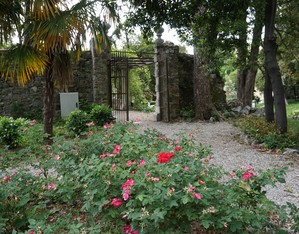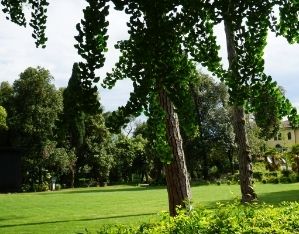In Gorizia, a city that in the 19th century was known as the “Austrian Nice” due to its mild climate and welcoming, multicultural atmosphere, Count Alfredo Coronini designed an exemplary garden boasting a variety of landscaping features.
In 1870, upon returning from a period of extensive travelling across Europe, Count Alfredo decided to settle in his property in the city of Gorizia, situated on the right bank of the Corno stream and embellished with a small regular-shaped garden which was enlarged and enriched in keeping with the international landscaping trends in fashion at the time, with an eye to the then recently-finished park of Castello di Miramare. The new landscaped layout of Parco Coronini Cronberg was organised around a few key features: the southern walls were screened off by an artificial hill and a belvedere hillock, and the south-eastern area was turned into a panoramic terrace. Once these interventions were concluded, the main entrance to the property was moved to the new road, today’s Viale XX Settembre. Between the end of the 19th century and the beginning of the 20th century, the area, structured on different levels was planted with evergreen vegetation reflective of Gorizia’s twofold Alpine (Nordic) and Mediterranean (Italic) identity. The key features of the park are its landscaped views, the chromatic and luminous effects of the tree areas and its triple-level structure. The last owner, Count Guglielmo, who died in 1990, donated the villa and the park to the city of Gorizia, a bequest that gave rise to the Coronini Foundation, a cultural institution working for the protection and enhancement of the entire area with its valuable tree population, composed of cedars, ginkgo biloba, holm oaks, myrtles, Aleppo pines, pittosporum, cork trees, yuccas and dogwoods.




